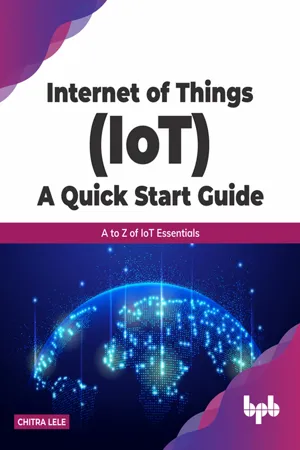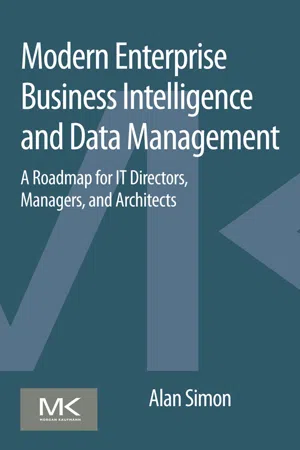Technology & Engineering
Data Management
Data management involves the process of collecting, storing, organizing, and maintaining data to ensure its accuracy, accessibility, and security. It encompasses various activities such as data integration, cleansing, and governance to support the efficient use of data for decision-making and business operations. Effective data management is crucial for leveraging technology and engineering solutions to derive insights and drive innovation.
Written by Perlego with AI-assistance
Related key terms
Related key terms
1 of 4
Related key terms
1 of 3
6 Key excerpts on "Data Management"
- eBook - ePub
Qualitative Secondary Research
A Step-By-Step Guide
- Claire Largan, Theresa Morris(Authors)
- 2019(Publication Date)
- SAGE Publications Ltd(Publisher)
10 Managing your DataThis chapter supports your ability to- understand the need for effective Data Management
- construct a Data Management plan
- identify and respond to the demands of data ownership
- store and dispose of your data securely
Chapter overview
An important undertaking in any research project is the organisation, storage and tracking of your collected data and this is called Data Management. This way of working with your data requires the adoption of a set of skills and behaviours that should enable you to work with your data in an appropriate, systematic and consistent manner. To aid you in the development of systematic processes, we provide an overview of the role and function of Data Management plans.This chapter therefore, examines a range of strategies for Data Management that should enable you to work proficiently with the type and quantity of data you may have amassed. These strategies are relevant whether you are working with hard (paper) copies or storing your work using various technological devices and formats. As part of our focus on digital forms of storage, we explore the fundamental importance of backing up all of your work.Underpinning this chapter is the role of Data Management in enhancing your researcher integrity because being able to show where your data has come from and recording it accurately enable your reader to trace the data you have utilised. This can be a way of enhancing research credibility and increasing confidence in your findings. By the end of this chapter, you should feel you can handle your data in an effective, systematic and secure way.What is Data Management?
Data Management is a general term which covers how researchers manage and organise the information used or generated during the research process (see Figure 10.1 - eBook - ePub
- Ahsan Zafar(Author)
- 2021(Publication Date)
- Packt Publishing(Publisher)
As the science of AI matures and gains traction, data will continue to gain importance and form the backbone of many new businesses and existing businesses will continue to look for ways to adopt it. AI is the science of training systems that can simulate tasks based on data. These systems continue to self-learn and refine their decision-making capabilities as new data becomes available. For example, Tesla uses internal and external sensors on its cars that send data back to its data centers and can then be used to show the average increase in speed over certain patches of road, determining hazardous locations that are causing drivers to take sudden action. Tesla accords data collection and analysis a high level of importance, going as far as parsing its online forum for insights.Now that we understand the value of data, we will look at what Data Management is and why it's important in the next section.Introducing Data Management
Data Management is the discipline of collecting, storing, and using data effectively and in a cost-effective manner. The key goal of Data Management is to put in measures to ensure that data remains viable and fit for its intended purpose and that when it has ceased to be useful, it is appropriately discarded or archived. Earlier, we established that data is a valuable resource and an asset to any company, but let's look at some of the benefits of Data Management.Benefits of Data Management
Data is critical to businesses regardless of their size, revenue, or industry. From a small mom-and-pop donut shop that serves locally to very large businesses that serve millions of customers every day, proper Data Management practices, processes, and tools are essential. Of course, a small business will not need to implement a Master Data Management (MDM) solution to manage its data, but a large organization will not be able to operate efficiently without it.Let's now review the benefits of Data Management more holistically:- Realizing cost efficiencies : Think about how much time you have spent searching for the travel policy on the company portal, spending time looking for an expense reimbursement form, or simply looking up a non-standard abbreviation that's just used internally in the company. A 2011 survey by Gartner reports a 20% reduction in labor productivity due to data quality issues. However, organizations that have effective Data Management report spending less because of data being readily available.
- Avoiding costly mistakes
- eBook - ePub
Internet of Things (IoT) A Quick Start Guide
A to Z of IoT Essentials
- Chitra Lele(Author)
- 2022(Publication Date)
- BPB Publications(Publisher)
- A typical IoT system consists of several devices. Although each of them separately might work well but when working as a system, they can behave in unexpected ways. It is not merely about collecting data from individual devices. The transferring, storing, and managing of data is necessary as it enables organizations to identify and resolve problems early on in the entire workflow in order to improve the overall performance level. Moreover, Data Management enables organizations to localize all important data and offers a general access point, which minimizes data movement (less data needs to be moved around, archived, or restored).
- A well-thought-out Data Management strategy helps to make businesses agile and helps businesses to gain real-time operational insights; it helps to understand data requirements and usage patterns of users. All these aspects can help organizations to understand how user behavior can affect the performance of their systems and products, and accordingly, they can fine-tune them. It helps to create the best-connected products, devices, and so on; it helps in product optimization. This strategy also helps to measure performance metrics.
- A robust strategy provides real-time monitoring in terms of the status of the processes and also gives out alerts in case any issues arise during the processes. Organizations need not rely on blind guesstimates anymore as they have real-time updates, and this helps them both in maintaining customer behavioral patterns and engagement history and in bringing about resource efficiency in terms of saving up on time, cost, and efforts.
- A comprehensive Data Management strategy can help in offering personalization to the customers. Analytics combined with machine learning and deep learning algorithms, organizations can predict customer needs, usage patterns, and so on, and in turn, use these findings to offer personalized customer experiences. According to research findings, 80% of customers are more likely to purchase products and services when organizations provide personalized experiences.
- eBook - ePub
- Richard Williams(Author)
- 2019(Publication Date)
- Routledge(Publisher)
ATIS indicates some of the ways in which Data Management can work, and how the principles of the concept can be realised. In this case, as with others was achieved by Data Management being business focused, sponsored and controlled. Many of the EDIFACT developments work with a similar overall philosophy, focusing on the business requirements for data and retaining customer support.Yet for the vast majority of organisations this situation has not been attained. In many organisations the path towards proper and full Data Management is thorny and obscure, even if it has been located at all. In attempting to introduce a concept or discipline like Data Management, any organisation is likely to be faced with a number of inhibitors to success:- few Data Management principles or functions are ever formally put in place at the inception of DP within an organisation;
Even in new “greenfield” organisations the emphasis is on fast response to business needs. These needs are usually specific, and therefore treated in an individual, isolated manner, with little reference to the rest of the organisation. Normally Data Management “evolve” in organisations, often after the first introduction of DBMSs. Consequently a mixed environment, in respect to meta data and data description standards invariably exists before Data Management does.- the speed of technology innovation and development results in a mixed technical environment being exhibited by most organisations using computer processing;
Regardless of the existence or otherwise of IT procurement policies the data processing architectures of many organisations tend to be mixed in hardware and software, and very mixed in terms of their levels of sophistication. Placing a Data Management environment around such a heterogeneous environment is never easy, even in small organisations.- the amount of technology exhibited by organisations is vast, and ever increasing;
As computing technology continues to improve in price performance terms more and more of it is purchased by organisations. This is because of its affordability and the benefits can easily be calculated with respect to short term productivity gains can be proposed. This is particularly so on the desk top, where over 90% of all computer processing power is located. Word processors and PCs have increased the effectiveness of offices significantly, justifying their purchase. As time has passed it has become possible to do work activities on PCs that were the exclusive remit of mainframes only a few years before. - eBook - ePub
Modern Enterprise Business Intelligence and Data Management
A Roadmap for IT Directors, Managers, and Architects
- Alan Simon(Author)
- 2014(Publication Date)
- Morgan Kaufmann(Publisher)
Today, metaData Management across the enterprise Data Management landscape might be viewed as an immutable capability that cannot be overlooked. Every type of data-oriented product produces at least rudimentary metadata, even if the metadata might only be regular updates to some type of logging file. Design-level tools all provide fields for data modelers, report designers and developers, and others to enter as much descriptive information as desired. (Whether those individuals actually do make those entries, and then keep them up to date, is another matter.)MetaData Management is a necessity in the realm of enterprise Data Management, especially given the breadth and depth of the data that needs to be managed across the typical enterprise and the portfolio of tools required to accomplish that management.4.7. Data quality and profiling
One of the most-cited mantras of the early days of computing was GIGO : “garbage in, garbage out.” Essentially, if “bad data” made its way into a system, overall results would likely be erroneous regardless of how well-designed a given software program might be.Software developers are taught how to filter incoming data via user-entry forms, application-to-application interfaces, external bulk data feeds, and other intake mechanisms to prevent errors from making their way into an application. Modern databases can be designed with DBMS-managed constraints to control ranges and lists of permissible values and cross-table referential integrity.Still, problematic data remains…well, a problem.The very nature of modern enterprise Data Management means that inevitably, data will regularly flow from one component to another. At every single instance of data interchange, errors that didn’t previously exist may be introduced. This means that even if a company’s or governmental agency’s application software developers had done a 100% perfect job in filtering out erroneous data from user entry screens and inbound bulk data feeds, within the enterprise errors could be introduced at any time as data flows from one environment to another.Various techniques fall under the umbrella of “data quality” including:• Data profiling - eBook - ePub
XML in Data Management
Understanding and Applying Them Together
- Peter Aiken, M. David Allen(Authors)
- 2004(Publication Date)
- Morgan Kaufmann(Publisher)
As data managers, your goals include understanding and improving the management of information and data as key enterprise assets. Understanding how to manipulate data structures represents the next plateau in the use of Data Management technologies. Data managers will be taking on expanded roles. By this, we mean leading the reengineering of processes and systems, capacity planning advising, XBP development, and business-driven data integration, just to name a few future possibilities. Once mastered, organizations will possess very different abilities from the ones taught currently in business courses at all levels. The Data Management challenges listed below are explained in the remainder of the chapter.1. Thought versus action 2. Understanding important data structures as XML 3. Resolving differing priorities 4. Expanding Data Management’s mission: producing innovative XML-based IT savings 5. Expanding Data Management’s mission: increasing scope and volume of data 6. Greater payoff for preparation 7. Understanding the growth patterns in your operational environment 8. (And let’s not forget) standard data names, value representations, source analysis, increased data access and provisioning, and increased value of the organizational data assets.There are differing perspectives on the role of Data Management within organizations. For the purpose of our seven Data Management challenges described in this chapter, we are looking at the practice of Data Management as a strategic as well as a support effort. The earliest efforts at Data Management were focused solely on technical issues surrounding getting the right information to the business to support operations and decision making. In this chapter, we focus on how XML will expand the traditional role of Data Management, which necessarily requires thinking about the practice outside of its normal roles.
Index pages curate the most relevant extracts from our library of academic textbooks. They’ve been created using an in-house natural language model (NLM), each adding context and meaning to key research topics.
Explore more topic indexes
Explore more topic indexes
1 of 6
Explore more topic indexes
1 of 4





